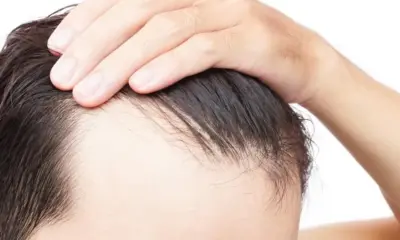Lifestyle
How to Have a Good Smile
Discover how to achieve a natural, confident, and attractive smile. This guide covers oral hygiene, facial exercises, and confidence-building techniques.
A good smile is often considered one of the most powerful and engaging forms of human expression. It can convey warmth, confidence, happiness, and sincerity, playing a significant role in social interactions, personal well-being, and even professional success. Beyond just the appearance of your teeth, a truly good smile radiates from genuine emotion and comfort. Many people feel self-conscious about their smile, often due to perceived imperfections in their teeth or a lack of confidence in their facial expressions.
The science behind a captivating smile involves a combination of dental health, facial muscle engagement, and psychological comfort. Historically, a healthy smile has been associated with vitality and social standing across various cultures. Modern dentistry has advanced significantly, offering numerous solutions for dental aesthetics, but true appeal often comes from the naturalness and sincerity of the expression. This guide will provide a comprehensive approach to achieving a good smile, addressing both the physical aspects of dental care and the psychological elements of confidence and natural expression, ensuring your smile is both healthy and heartfelt.
Understanding the Components of a Good Smile
A “good” smile isn’t just about perfect teeth; it’s a holistic combination of elements:
- Oral Health: Healthy teeth and gums are fundamental. This includes good dental hygiene, absence of decay, and fresh breath.
- Dental Aesthetics: This refers to the appearance of your teeth – their color, alignment, shape, and proportion.
- Facial Muscles and Expression: The way your facial muscles engage to form the smile, including the eyes (a genuine smile often involves the “Duchenne smile,” crinkling the eyes).
- Confidence and Authenticity: A genuine smile comes from a place of comfort and happiness, rather than being forced.
Step-by-Step Guide: Enhancing Your Dental Health and Aesthetics
The foundation of a good smile is a healthy mouth.
- Master Your Oral Hygiene Routine
This is non-negotiable for a healthy and attractive smile.
- Brush Twice Daily:
- Use a soft-bristled toothbrush and fluoride toothpaste.
- Brush for at least two minutes each time, covering all surfaces of your teeth and your tongue.
- Tip: Use gentle, circular motions. Brushing too hard can damage gums and enamel.
- Floss Daily:
- Flossing removes food particles and plaque from between teeth and under the gumline, areas your toothbrush can’t reach.
- This prevents cavities and gum disease.
- Use Mouthwash (Optional but Recommended):
- An antiseptic mouthwash can help kill bacteria and provide fresh breath. Choose an alcohol-free option to avoid dryness.
- Stay Hydrated:
- Drinking plenty of water helps wash away food particles and maintains saliva production, which is crucial for neutralizing acids and preventing decay.
- Maintain Regular Dental Check-ups and Cleanings
Professional care complements your home routine.
- Visit Your Dentist Regularly: Schedule check-ups and cleanings at least once every six months, or as recommended by your dentist.
- Professional Cleanings: Dental hygienists remove stubborn plaque and tartar that brushing and flossing can miss.
- Address Dental Issues Promptly: Don’t delay addressing cavities, gum inflammation, or other dental problems. Early intervention can prevent minor issues from becoming major, costly ones.
- Consider Cosmetic Dental Enhancements (If Desired)
If you’re self-conscious about specific aspects of your teeth, discuss these options with your dentist.
- Teeth Whitening:
- Professional in-office whitening or dentist-supervised at-home kits can significantly brighten your smile.
- Avoid DIY methods that aren’t dentist-approved, as they can damage enamel or irritate gums.
- Orthodontics (Braces/Aligners):
- For misaligned, crooked, or gapped teeth, orthodontics can correct alignment over time, creating a straighter smile. Options include traditional braces, clear aligners (like Invisalign), and lingual braces.
- Veneers:
- Thin, custom-made shells that cover the front surface of teeth to improve appearance (shape, color, size).
- Bonding:
- A tooth-colored resin applied and hardened with a light to repair chipped, cracked, discolored, or gapped teeth.
Entity Definition: Plaque is a sticky film of bacteria that constantly forms on your teeth. If not removed by brushing and flossing, it can lead to cavities and gum disease.
Entity Definition: Tartar (also known as calculus) is hardened plaque that attaches to the tooth surface. It forms above and below the gum line and can only be removed by a dental professional.
Step-by-Step Guide: Practicing and Improving Your Smile Expression
Beyond dental health, the way you smile matters.
- Practice in Front of a Mirror
This helps you understand your own smile and make conscious adjustments.
- Observe Your Natural Smile: Smile genuinely and observe which muscles activate. Notice your eye crinkles (Duchenne smile) and how your lips and teeth appear.
- Experiment with Different Intensities: Try a subtle smile, a broad smile, and everything in between. Pay attention to how it feels and looks.
- Focus on Your Eyes: A genuine smile involves your eyes. Practice smiling with your eyes first, letting the feeling spread to your mouth. This helps avoid a forced or “fake” smile.
- Avoid the “Cheesy” Smile: Don’t force your mouth too wide or show too much gum. Aim for a relaxed, natural expression.
- Engage Your Whole Face (The Duchenne Smile)
The Duchenne smile is universally recognized as a genuine smile.
- Activate Orbicularis Oculi: This is the muscle around your eyes that causes the “crow’s feet” crinkles. Practice smiling in a way that engages these muscles.
- Think Happy Thoughts: It sounds simple, but truly thinking about something joyful or funny can naturally activate the right muscles and make your smile more authentic.
- Relax Your Jaw and Shoulders
Tension can make a smile look forced or strained.
- Loosen Up: Before smiling, take a deep breath and consciously relax your jaw, shoulders, and neck.
- Avoid “Smizing” too Hard: While eye crinkles are good, don’t squint or strain your eyes. It should feel natural.
- Practice Good Posture
Posture impacts your overall presence and how your smile is perceived.
- Stand Tall: Shoulders back, head held high. Good posture can make you feel more confident, which translates into a more confident smile.
- Embrace Authenticity
The most attractive smiles are those that are genuine.
- Don’t Overthink It: While practice helps, try not to be overly critical in real-time situations.
- Smile When You Feel It: Let your smile be a natural response to positive emotions or interactions.
- Find Your “Go-To” Smile: Through practice, you might discover a comfortable, natural smile that you can easily access.
General Lifestyle Factors for a Radiant Smile
- Healthy Diet: Limit sugary and acidic foods/drinks that can erode enamel and cause cavities. Eat plenty of fruits, vegetables, and dairy for strong teeth.
- Avoid Stains: Reduce consumption of coffee, tea, red wine, and tobacco, which can stain teeth.
- Quit Smoking/Vaping: These habits are detrimental to oral health (gum disease, oral cancer) and can severely stain teeth.
- Stay Confident: Work on your overall self-confidence. When you feel good about yourself, it naturally shines through in your expressions, including your smile.
Achieving a good smile is a journey that combines diligent oral care, mindful facial expression, and a confident mindset. By focusing on these aspects, you can cultivate a smile that is not only healthy and aesthetically pleasing but also radiates genuine warmth and sincerity.
Frequently Asked Questions (FAQ)
Q1: What makes a smile “good” or attractive?
A1: A good smile combines healthy, well-maintained teeth and gums with a genuine, natural facial expression. Key elements include good oral hygiene, aesthetically pleasing teeth (color, alignment), and the engagement of facial muscles around the eyes (the “Duchenne smile”), conveying sincerity and confidence.
Q2: How often should I brush and floss my teeth for a healthy smile?
A2: For optimal oral health, you should brush your teeth twice a day (morning and night) for at least two minutes each time, using a soft-bristled toothbrush and fluoride toothpaste. You should also floss once a day to remove plaque and food particles from between your teeth and under the gumline.
Q3: Can professional teeth whitening really make a difference?
A3: Yes, professional teeth whitening (either in-office or with dentist-supervised at-home kits) can make a significant difference in the brightness of your smile. It is generally much more effective and safer than over-the-counter or DIY methods, as it uses stronger agents under professional guidance to prevent damage to your tooth enamel or gums.
Q4: What is a “Duchenne smile,” and how do I achieve it?
A4: A Duchenne smile is a genuine smile that involves the contraction of two facial muscles: the zygomaticus major (which pulls up the corners of the mouth) and the orbicularis oculi (which creates wrinkles around the eyes, often called “crow’s feet”). It’s considered a sign of true enjoyment. To achieve it, practice smiling in a mirror while genuinely thinking of something happy or humorous, allowing the joy to reach your eyes.
Q5: Can facial exercises help improve my smile?
A5: While facial exercises won’t change your dental alignment, some people find they can help improve muscle control and symmetry in their smile. Practicing smiling in front of a mirror, focusing on relaxing your jaw, and ensuring your eyes are engaged can help train your facial muscles to produce a more natural and confident expression.
Q6: What foods and drinks should I avoid to maintain white teeth?
A6: To maintain white teeth and prevent staining, it’s best to limit consumption of highly pigmented foods and drinks. Common culprits include:
- Coffee and tea
- Red wine
- Dark sodas
- Berries (blueberries, blackberries)
- Curry and tomato-based sauces Also, highly acidic foods and drinks can erode enamel, making teeth more susceptible to staining. Rinsing your mouth with water after consuming these items can help.



















